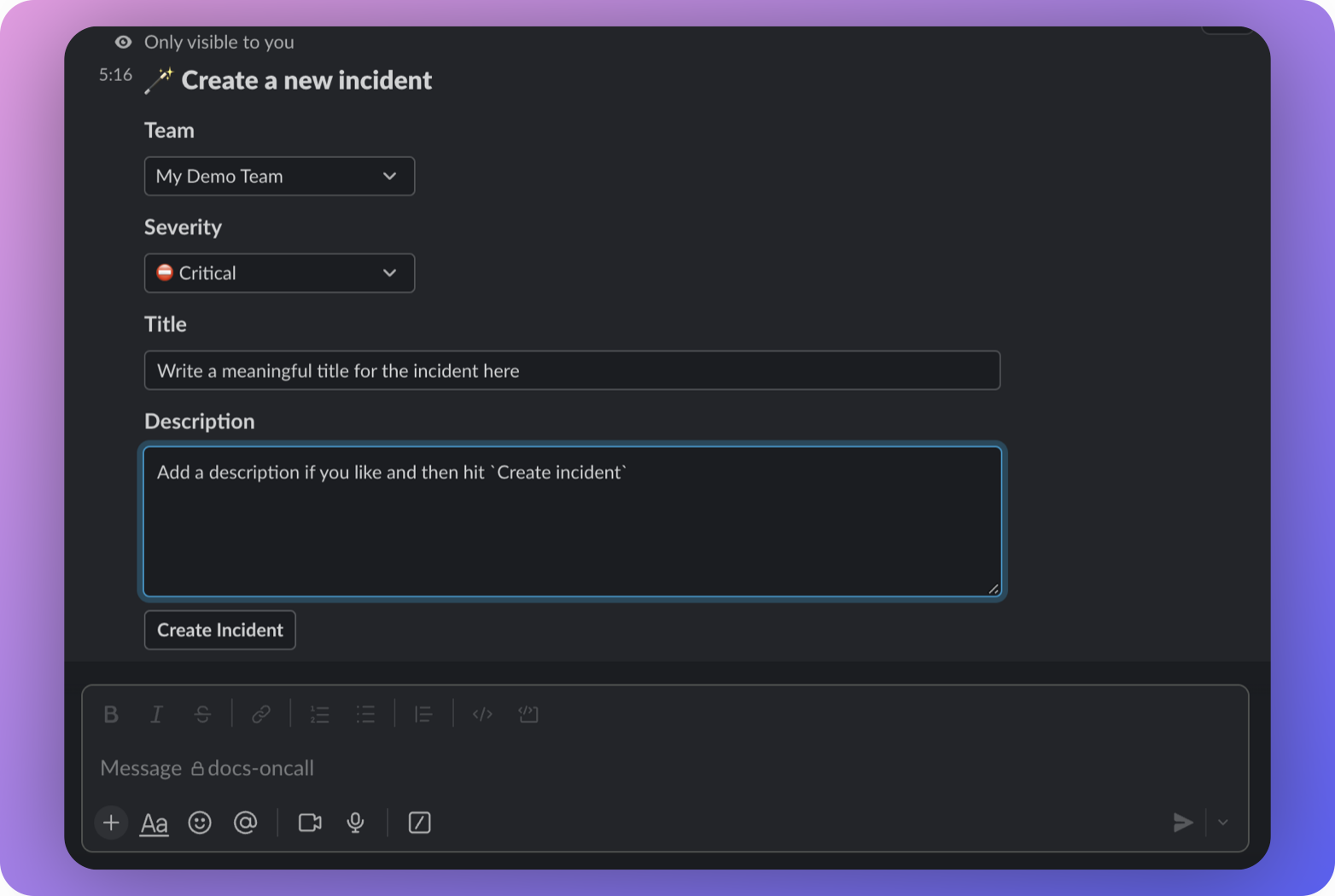Setup time: 3 Min
Create Outbound Integration
- Click on
Integrations > Outboundto navigate to the outbound integrations page. - Once you’re on the Outbound Integrations page, click on
Create New Outbound Integrationin the top-right corner.
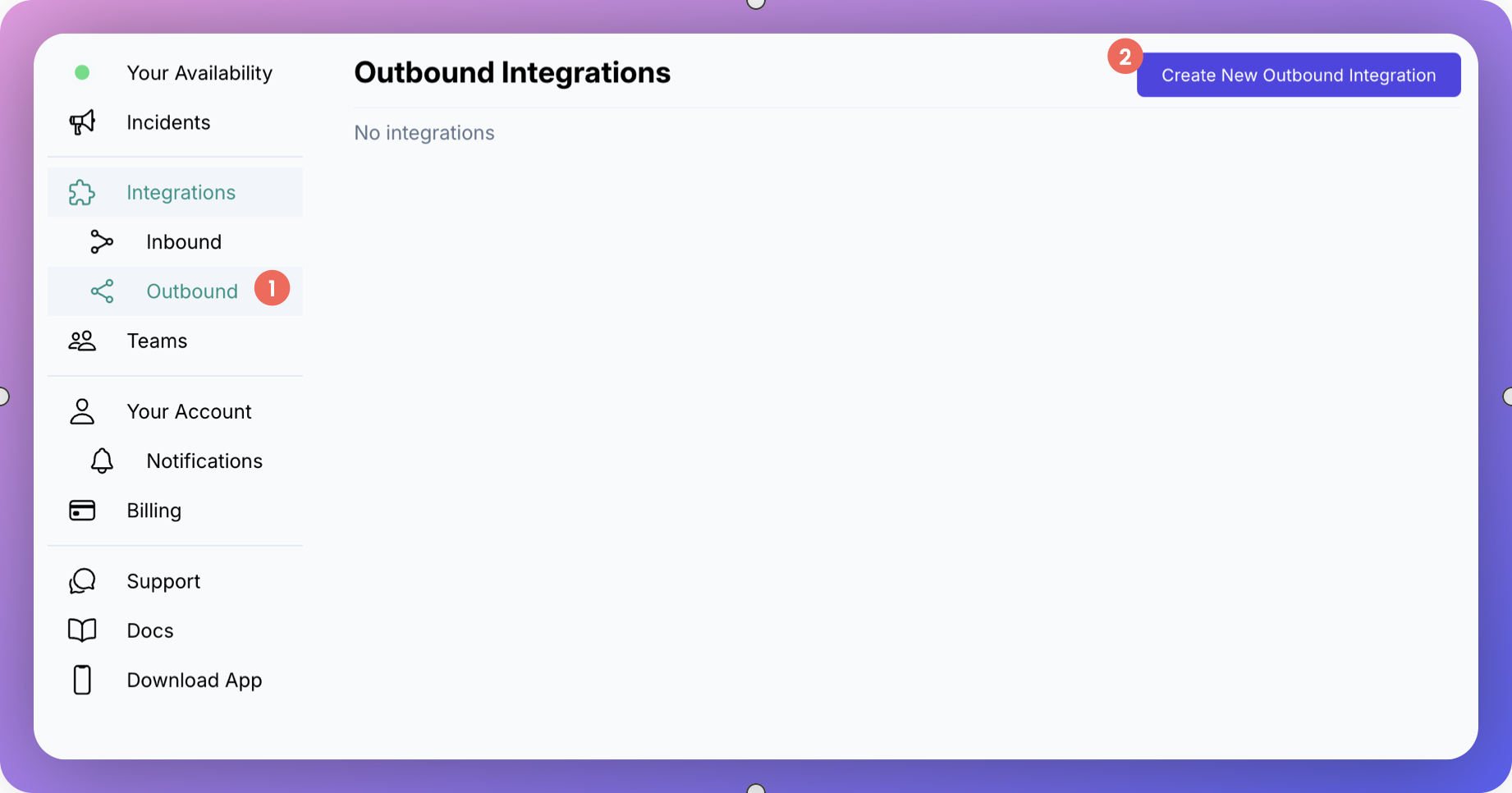
- In the Display Name field, provide a name for your integration. For instance, you can name it “Slack”.
- Select the team you want to add the integration to. For Organizations with Pro and Enterprise plan: This is going to be the root team of your integration. You will be able to add additional teams to the same integration in the next step.
- Under the Type section, select Slack from the dropdown menu.
- Once you’ve provided all the necessary details, click on the
Create Integrationbutton to complete the setup.
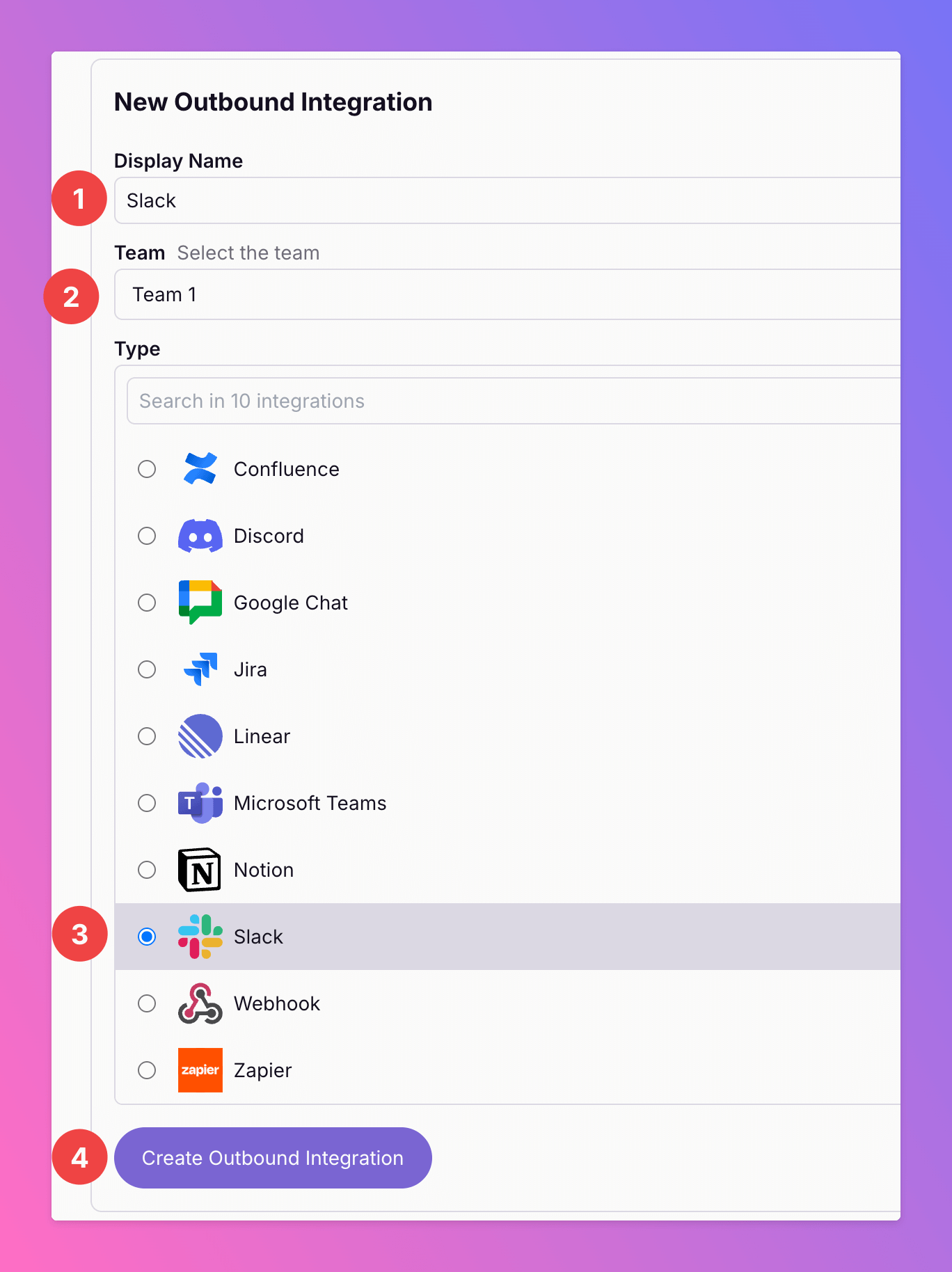
Add All Quiet App For Slack to Your Workspace
After successfully creating your new outbound integration, you’ll be redirected to the details page automatically.- The option
Triggers Alwaysis enabled by default. This means that we will forward all incidents to your Slack channels, unless excluded by additional advanced routing rules. When enablingTrigger Always After Forwarding, we will not automatically send messages to your team’s channels. Messages will only be sent if users manually forward specific incidents or if you set up advanced routing rules for your integration for Slack that automatically forward incidents in specific scenarios. You can change your selection anytime. - Notice that the installation status of the All Quiet integration is still pending.
- To complete the integration with your Slack workspace, click on
Add to Slack.
Only for Pro and Enterprise plan - Connect the Integration with several teams: The root team is pre-selected, and you can add the integration to further teams within the root team’s organization. Team Administrators can add / remove those teams they are an admin in, Organization Administrators & Organization Owners can manage the connections to all teams of the organization.
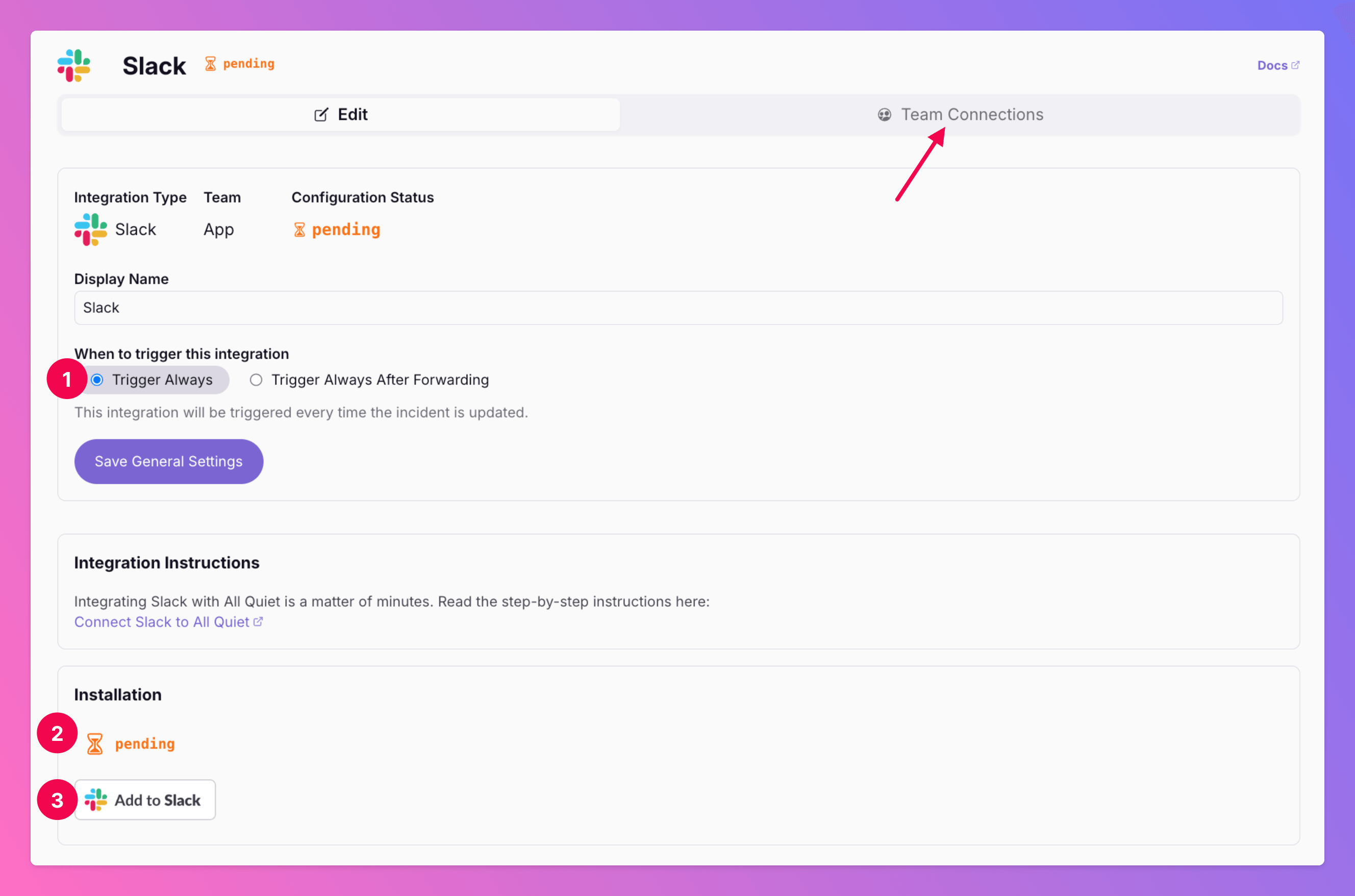
All Quiet App for Slack (or, if you are a allquiet.eu user, the All Quiet EU App for Slack).
We request only those permissions that are strictly necessary for All Quiet to function properly. We access this data solely when you interact with the app and never use it for any other purpose.
Click on Allow. To learn more about the data we collect, check out our privacy policy.
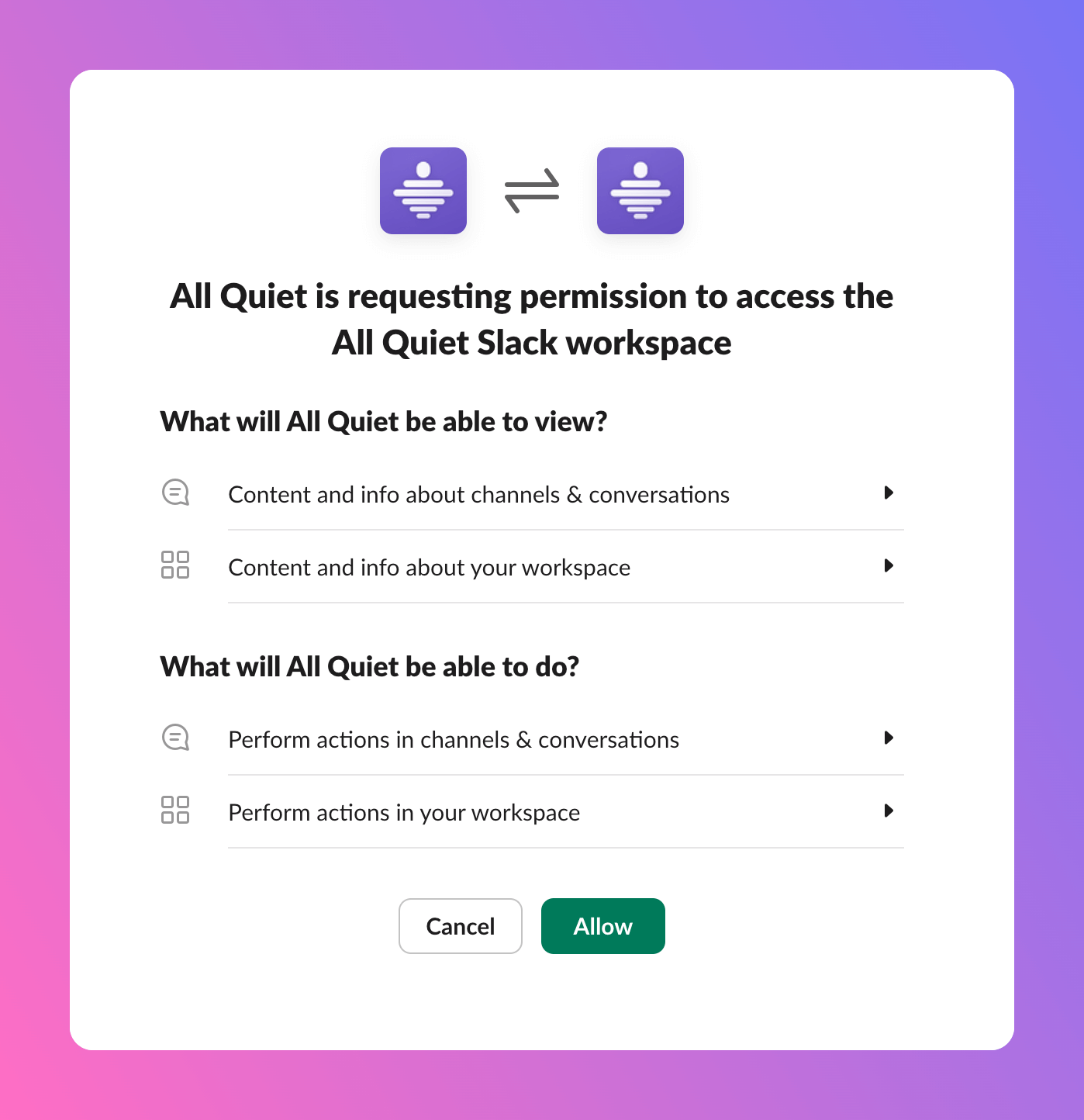
- Observe that the Installation Status now indicates “installed”.
- There’s an option to tag you on-call members in the related Slack channels when an an incident is assigned to them.
- For All Quiet to send incidents to your Slack workspace, you must invite All Quiet to at least one channel.
- As soon as you added All Quiet to at least one Slack channel, you can set up an automated message you can use to inform your Slack channels who’s currently on-call in the All Quiet team(s) connected to the integration.
- To save, click
Update Settings
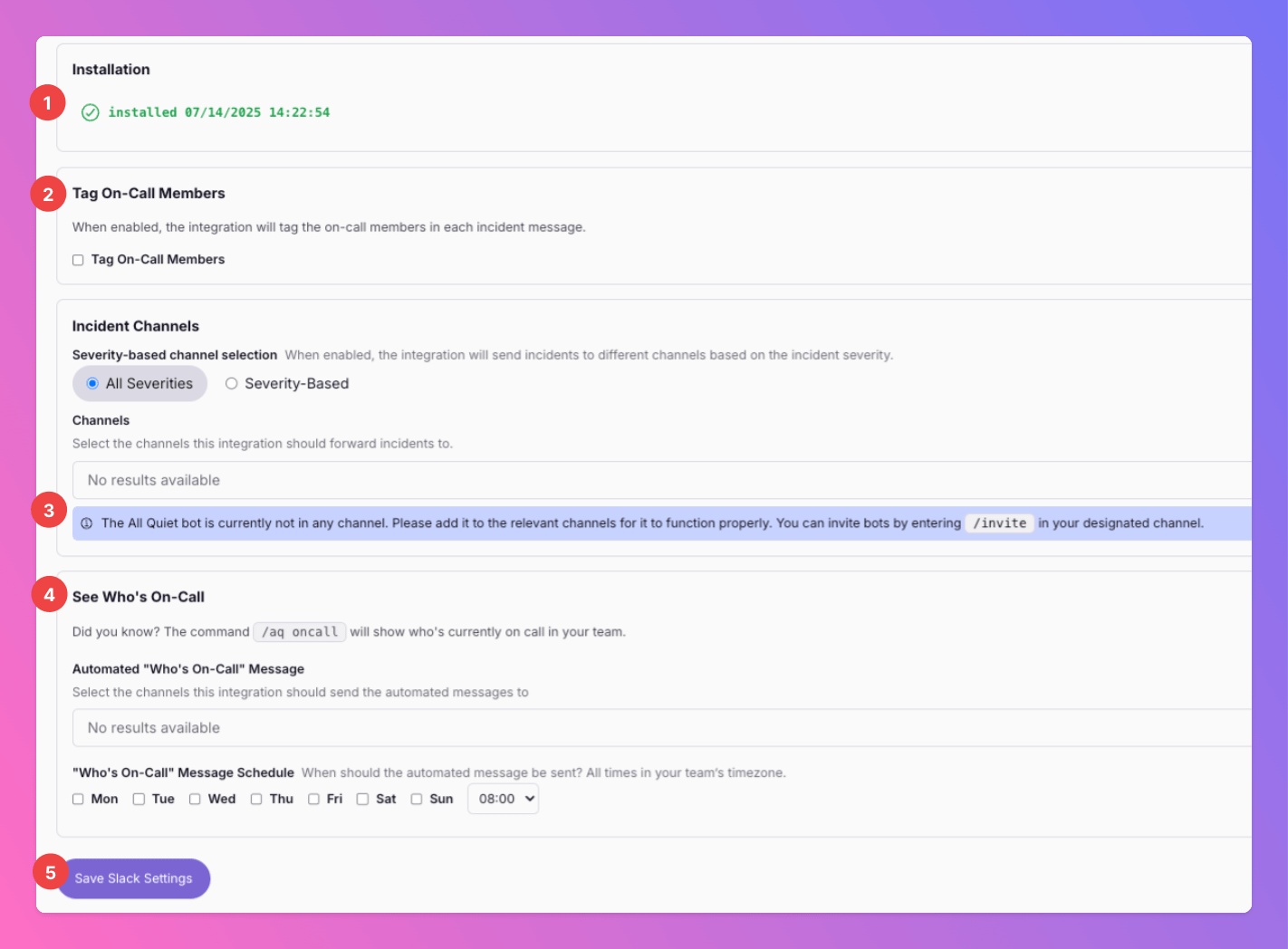
- Start by typing
/invite @All Quiet. //invite @All Quiet EU. - Select
All Quiet(or, if you are a allquiet.eu user, theAll Quiet EU) and then pressEnterto add the app into your channel.
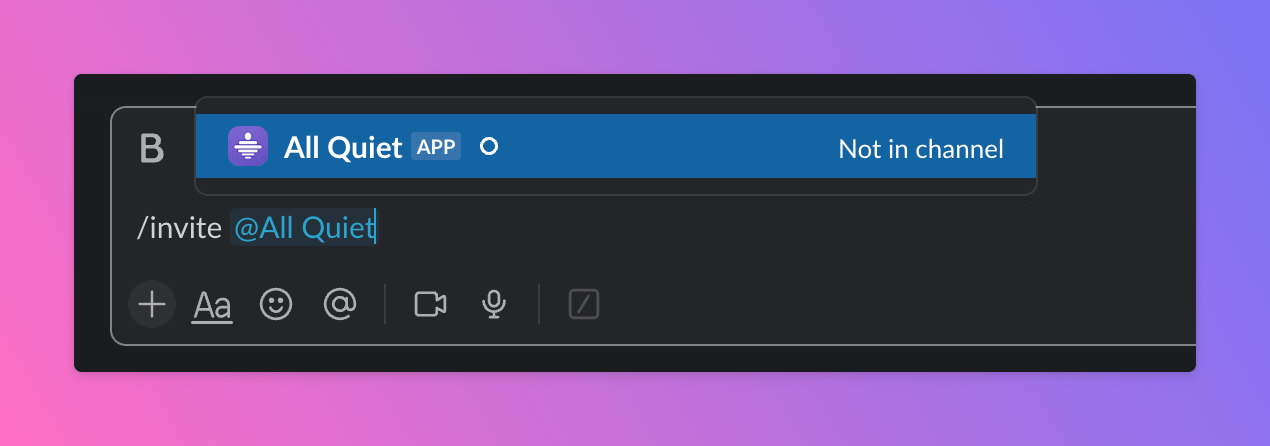

- From the channels you added the bot to, select those you want to send incidents to. You can decide to either
- Send all incidents to the same channels.
- Select channels based on incident severity.
- Also, you can now select the channels you want to sent the on-call message to.
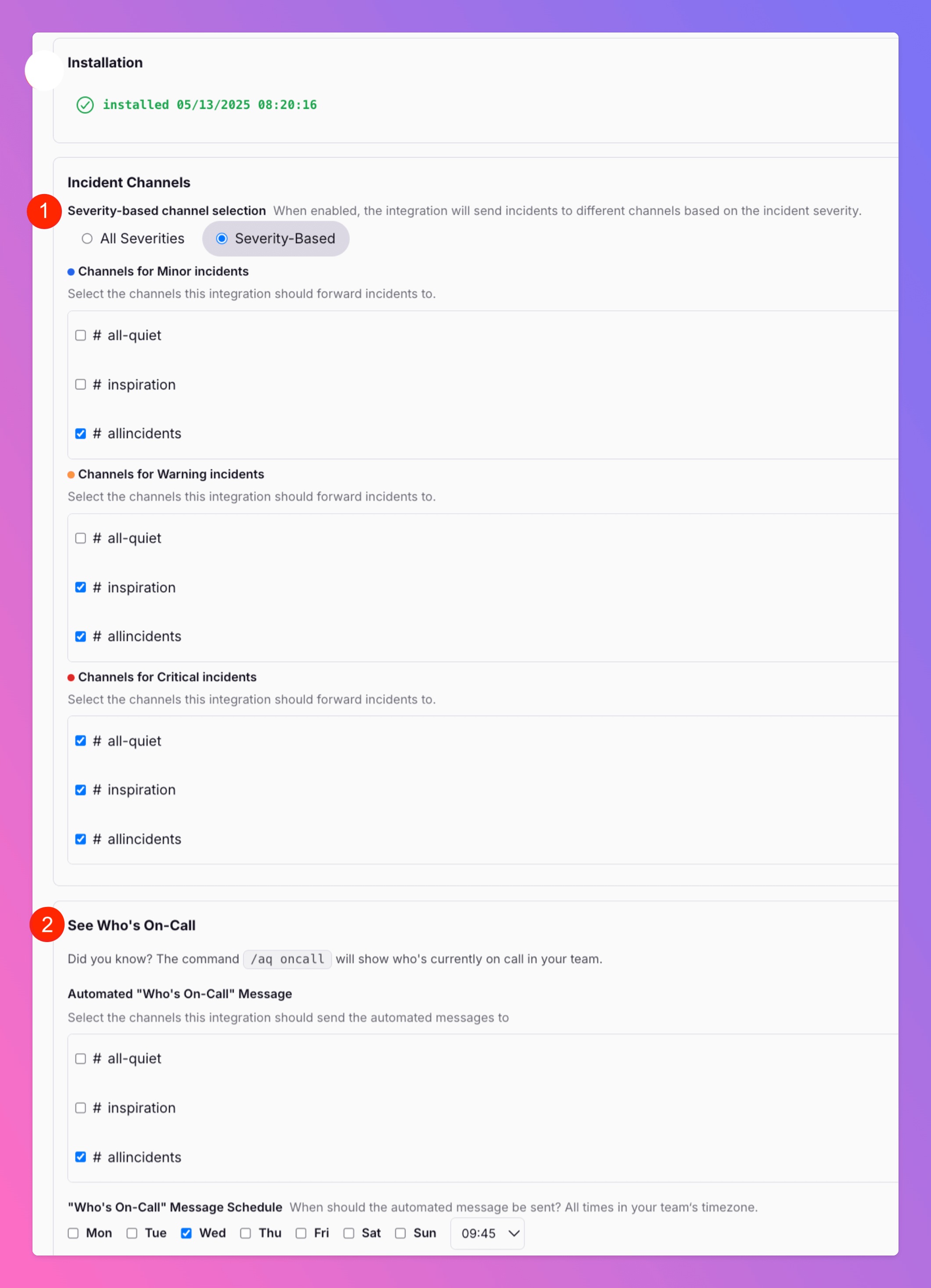
Engage with Incidents Directly in Slack
Each time you engage with incidents via All Quiet, our integration for Slack sends an interactive message to your designated channels. This allows you to manage incidents seamlessly, mirroring the experience on our iOS, Android, and Web Apps, all without leaving Slack. For compliance reasons, only Users with rights in the All Quiet team(s) connected to the incident can interact with the Message. This also includes members of the incident integration root team, ensuring they can always interact even when the incident is assigned elsewhere.
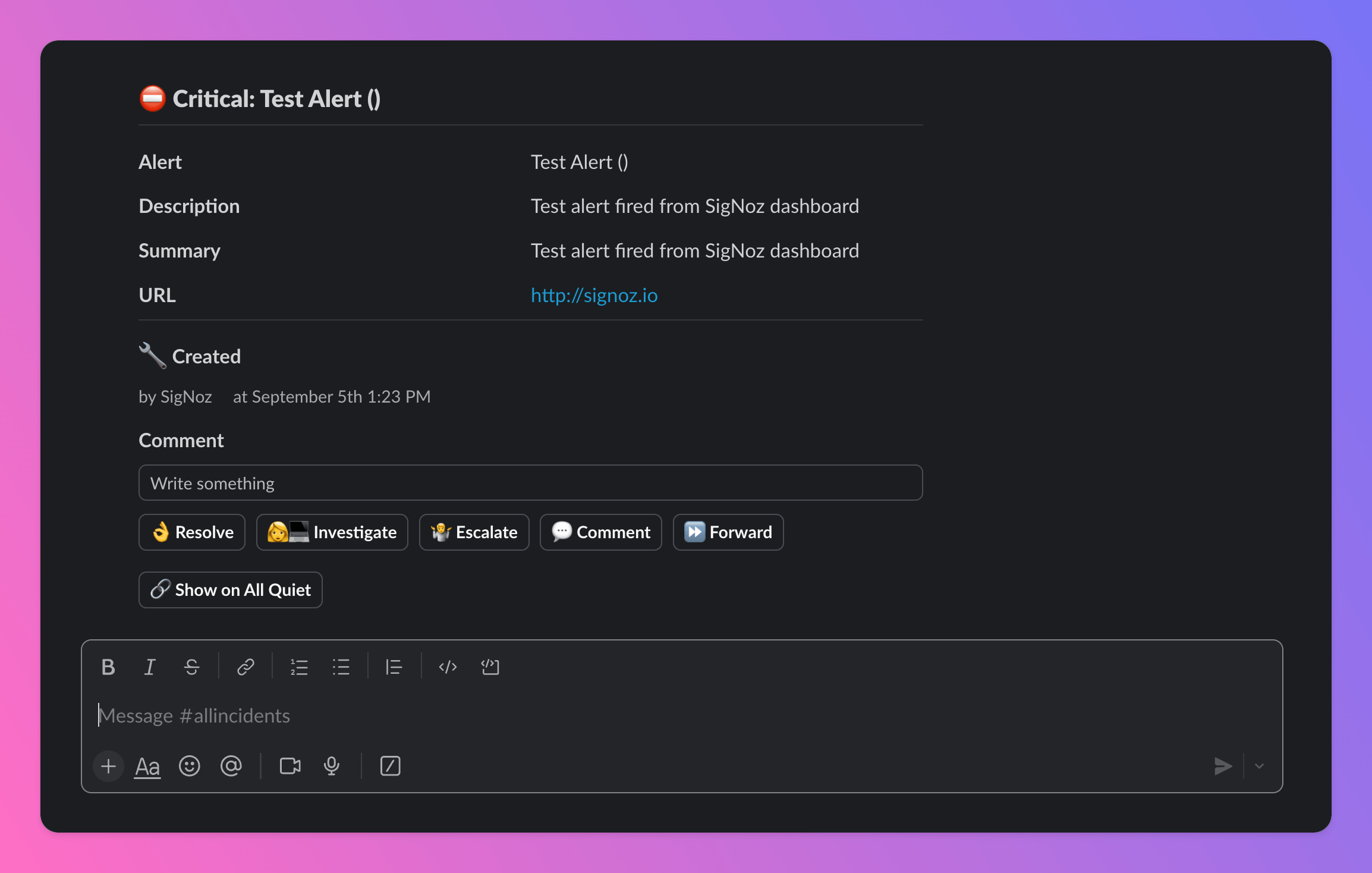
Slack is now integrated with All Quiet, simplifying incident management by consolidating notifications and actions in one place.
All Quiet App for Slack Commands
Now that All Quiet is installed on your Slack workspace you can use some handy commands. To see all available All Quiet for App Slack commands start by typing/aq and a window with available commands should appear.

/aq oncall
Type in/aq oncall to directly see on Slack who is currently on-call in which escalation tier in all of your teams.
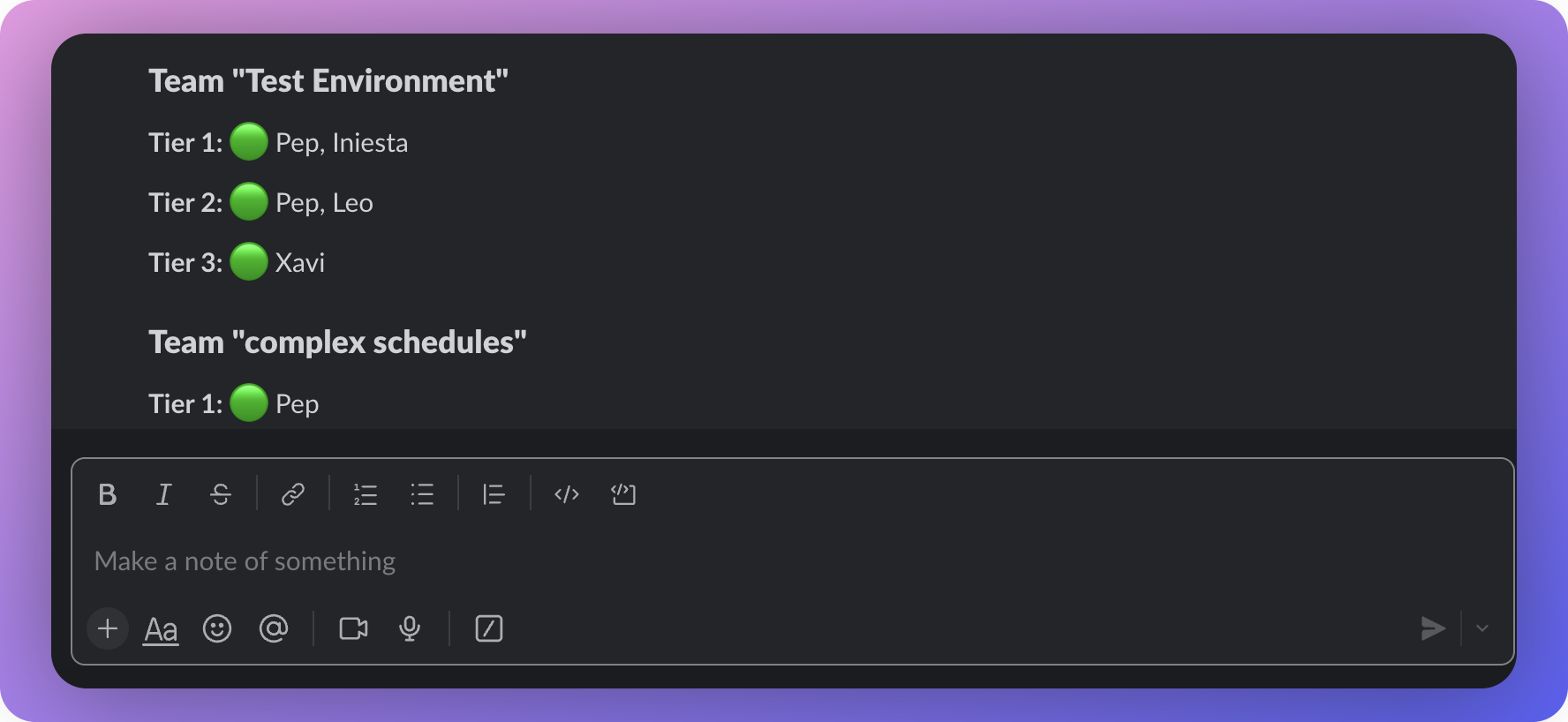
/aq new
Type in/aq new to trigger an All Quiet incident directly from Slack
- choose the team this incident is for
For compliance reasons, Users will only be able to select from the All Quiet teams they have rights in & that are connected to Slack via the integration.
- the severity of the incident
- write a title for the incident
- add a description to the incident
